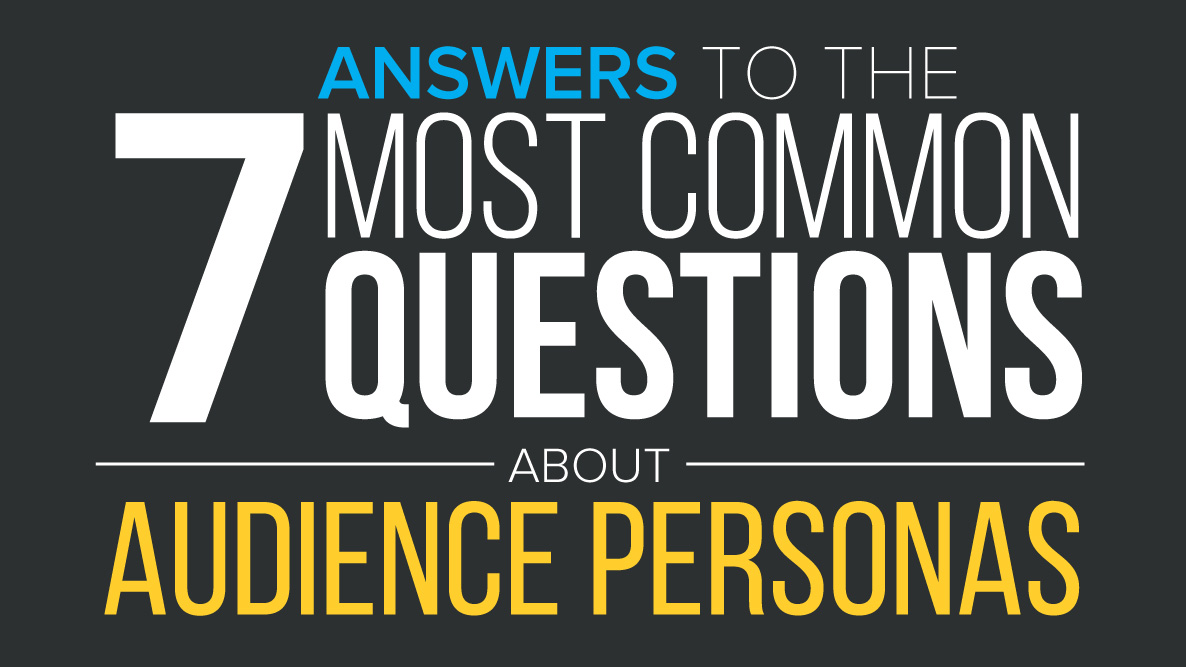Thanks to everyone who joined us for last week’s webinar, Building Effective Buyer Personas: The Key to Audience Engagement and Content Marketing. It was a great experience to partner up with our friends at Akoonu, and talk about why generic content doesn’t cut it anymore and how buyer personas and journeys can focus your content marketing strategy.
Your goal is to stand out from all of the noise on the internet, and truly reach your audience. This can be a dynamic process, especially in B2B models, as there are several layers of decision makers and influencers. Studying the details of personas and journeys will help your Marketing and Sales teams develop a unified vision of your customers, and ensure that the content you create fits the needs of your audience.
Brafton and Akoonu got together to answer some of the questions you asked during the webinar.
Q: How can personas be relevant for social media marketing?
AKOONU: While the format for content on social media may be different than traditional media, it still requires the same types of insights to ensure it is relevant, engaging and valuable to your audience. Check out this eBook that discusses how personas and journey maps can be applied to a wide range of content marketing platforms.
BRAFTON: Personas are just as useful in social media as they are anywhere else. Knowing who your personas are will dictate what you post on each channel. For example, your data could suggest that a C-level executive is likely to engage with content on LinkedIn, while a lower-level employee might be more prone to using a network like Facebook or Pinterest. Every network implies a unique set of personalities in its users, and knowing where to share the content you create for each persona will help you tailor your message.
Q: Your example makes sense for a B2B target market. How does this work in a B2C target market, where one person is the buyer and possibly also the user?
BRAFTON: Look at the two journeys. For a single person going through a series of touchpoints, like welcome emails and webinars, to get to a solution, it’s a much simpler function to optimize. Businesses offer a richer, more complex environment – there are more people, nuances and dynamics involved. Once you can understand those complexities through building personas, you’ll be able to facilitate and enable the audience’s buying journey.
In general:
- B2C personas are demographic-focused – there is often more transactional data to leverage.
- B2B personas serve to add value – the data to sift through isn’t as rich as B2C.
Q: Ok. Call me crazy. What does this have to do with content?
AKOONU: Hello, Crazy. In today’s world, content is the way that companies engage with their audience, and a primary means with which buyers find, research and evaluate products. With the increasing amount of content being published, and the staggering number of digital interactions, it is a noisy world!
To ensure that your content stands out from the noise, and connects with your audience, you need to understand who the buyers are and how they buy. This is particularly true in B2B where multiple people are involved in purchase decisions, each with their own needs and preferences. Buyer Personas and Journey Maps provide the in-depth understanding to ensure you are creating relevant content that fulfills the needs of your buyers, and is delivered in the preferred formats and channels.
Q: How often do you suggest we should revise our buyer personas?
BRAFTON: Updating your personas quarterly is usually the best way to strike a balance between keeping them accurate and realistic, without over-thinking them or losing sight of your actual audience.
Q: What are some methods you have found effective at gathering data about the buyers in addition to interviews?
AKOONU: Best practices include analyzing your data from current customers and leads to learn more about where they are in the buying journey and how they interact with you throughout the journey. Doing a content audit can clarify if there are missing pieces in the buying journey. Surveys are also a great way to capture firsthand feedback from your buyers. In addition, we recommend including industry research and resources for a well-rounded view of the persona.
Q: Prospects are unwilling to be interviewed. How do I develop personas with little to no info?
BRAFTON: Sometimes agencies work with start-up companies that don’t have real customers yet. You have to begin with a hypothesis in these situations – seek to answer who the buyer is and what they want. The more you continue to market, build your brand or research buyer information, the more ways you’ll find to test your hypothesis. The key is to be nimble, keep your ears open, and constantly modify and refine your model.
Q: How do you manage the personas when the players stay the same but the role they play at each company changes? For example the CFO is the main driver for the whole process with one company and then only involved in the purchasing stage in another company?
AKOONU: What you are describing is the difference in buying patterns between different types of companies or between brands within different markets. Segmentation is certainly part of the answer – the same persona (e.g. a CFO) may play a very different role in different segments (SMBs vs enterprise companies). Thinking about personas and journeys in the context of market segments is critical to make sure you capture these types of nuances.
And of course, individuals and companies may have nuances and differences in buying behavior, but personas and journey maps will still be very insightful in enabling their buying journeys.





